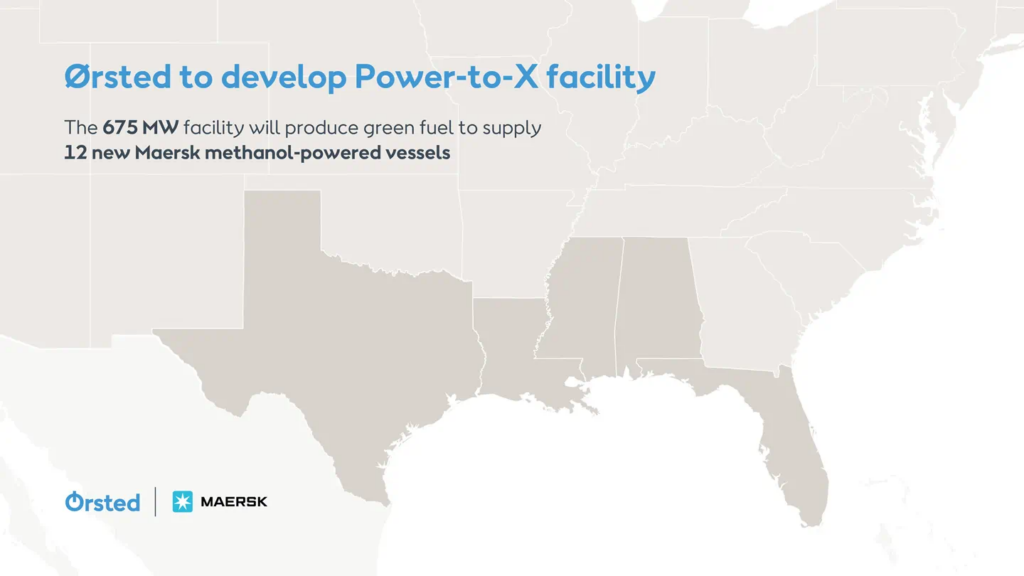Maersk secures its first complete e-fuel supply chain
By Julian Atchison on March 17, 2022

A.P. Moller – Maersk has entered into strategic partnerships with six organisations to secure the supply of at least 730,000 tonnes per year of green methanol fuel by 2025. The amount is more than enough required to fuel Maersk’s future fleet of twelve methanol-fueled container ships, which were ordered from Hyundai Heavy Industries back in August 2021. Production of green methanol will be scaled across the globe, with facilities in China, North America and South America under development.
Ammonia & methanol: parallel pathways
Last March we explored how ammonia & methanol seem poised to develop on parallel paths where maritime fuel is concerned. For our readers at Ammonia Energy, this new announcement from Maersk is highly promising. It demonstrates a path forward for ramping up supply of alternative maritime fuels by having a shipowner commit to complete off-take, in this case to power a fleet of future vessels (which will hit the water the same time as supply begins to scale up in earnest).
The maritime industry faces a chicken-and-egg challenge, where the supply and demand of green fuels will have to evolve in parallel to fast ensure a sustainable development of zero emission fuels.
Martin Neubert, Deputy CEO and CCO at Orsted in Maersk’s official press release, 10 March 2022
Staring down this chicken-and-egg challenge was also a feature of last month’s Insights article on the evolution of green maritime corridors.
Ramping production past 1 million tonnes/year
This off-take is spread geographically over a variety of players developing methanol production via a variety of processes. By 2024 the first three facilities – two in China and one in South America – will produce 130,000 tonnes per year of bio-methanol from agricultural waste. There is scope to drastically increase the production capacity of the two Chinese bio-methanol plants post-2025.
By 2025 two new P-to-X projects will come online, adding up to 700,000 tonnes per year to the supply chain. One of those P-to-X projects will be developed by Ørsted on the US Gulf Coast, featuring 1.2 GW of onshore wind and solar power generation. Ørsted is already developing the FlagshipONE green methanol project in Örnsköldsvik, Sweden, where hydrogen produced by wind-powered electrolysis will be paired with carbon dioxide captured from an adjacent heat & power plant. Once the two P-to-X projects are online (and expansion of the two Chinese bio-methanol plants is complete), Maersk’s direct access to methanol maritime fuel will be well beyond one million tonnes per year.
Methanol-ammonia dual fuel
There have been a series of recent announcements about the development of methanol-ammonia dual-fuel vessels:
- RINA and SDARI’s agreement to jointly develop an ammonia-methanol fueled vessel, signed in February 2021.
- An agreement between OCI and EPS from March 2021 to retrofit existing vessels in EPS’ fleet to run on ammonia or methanol fuel. Both the RINA – SDARI and OCI – EPS partnerships also involve MAN ES, who is adjusting its commercially available methanol-burning maritime engine to also run on ammonia fuel.
- And speaking of engines, Swiss-based engine manufacturer WinGD announced in December 2021 that its product line of low-speed maritime engines would be fully capable of running on methanol or ammonia fuel by 2025 at the latest.